
|   |

|   |
Rewound Reel - Art of Avinash Pasricha - Navina Jafa e-mail: navina.jafa@gmail.com November 15, 2021 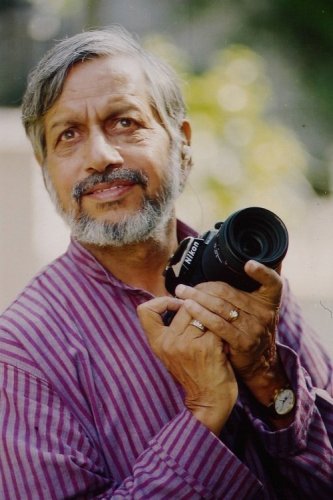 Avinash Pasricha In the 1980s, it was common to see a slight built cameraman dancing around performing artists, clicking away in the premises of Mandi House, the hub of cultural activities in New Delhi. Lights and black and white umbrellas surrounded the performer and the photographer to assist in freezing performances in the art of photography. Days went by, the performer awaited with bated breath for the transformation of her dance into the art of photography by Avinash Pasricha. For decades, he remained the go-to artist for performers, the medium who took their art to the world from arangetram to swan songs. 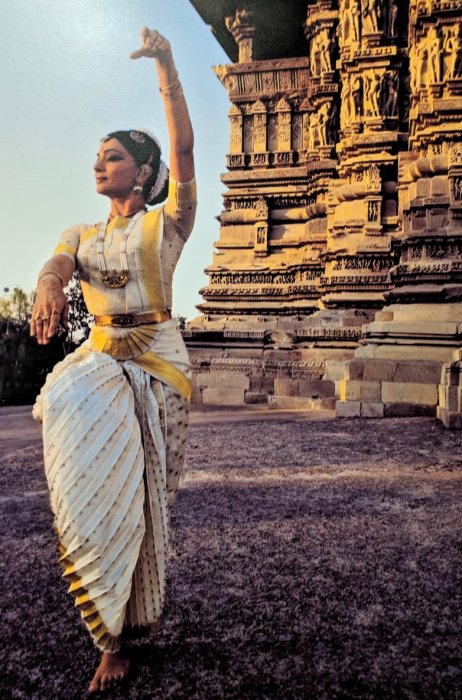 Malavika Sarukkai Celebrating his contribution in documenting the living heritage of the Indian performing arts, The Museo Camera Centre for the Photographic Arts, Gurugram is holding a retrospective (until 22nd Nov), comprising 90 photographs by Pasricha having performing arts and other subjects. Visual historian Aditya Arya trained with Pasricha, created the museum, the largest in South Asia with over 3500 objects on photographic heritage from 1860. Arya describes, "This exhibit, an analogue, displays photographs that belongs to the non-digital era; it is magical for instance, viewing a frame of negatives on 'reel' to the technique of multiple exposures." He recalls, "Pasricha spoke of his near to death experience in capturing the early morning Khajuraho, coloured shot of Bharatanatyam performer Malavika Sarukkai. What came out to be a spectacular image conveying an oeuvre of structural alignment between the body shapes of the dancer with the contours of the 10th century temple was accompanied by Pasricha moving back where there was only a millimetre before he fell off a high plinth."  Made for each other-Award winning pic Aditya Arya remarks, "Pasricha's art created by a man with a defective hearing seeks to capture the mood, movement, expression and colour. It is like muting a film and communicating multiple layers of a story." It is about feeling the music and dance rather than hearing the arts, evident in Bismillah Khan and Bhimsen Joshi's black and white pictures that arrest musical notes in abstract space. Award winning image is the lifted heel of Odissi dancer Madhavi Mudgal. The lifted foot performs to the flying fingers of a pakhawaj percussionist, bringing to the mind the words of art historian Roger Lipsey - "When people begin to look beyond or within themselves for a strength to face life or a wisdom to understand it that surpasses their ordinary capacity." 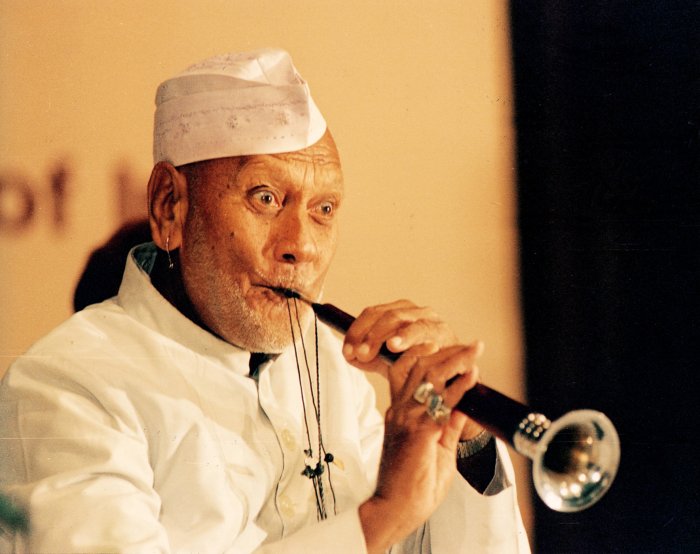 Bismillah Khan The exhibition displays a series of emotional processes. Pasricha recounts, "Dance is beyond capturing action; it is about the emotion of the action, and even more so in Indian dance, which involves intensity of facial emotions. In 2010 at a program where singer Girija Devi sang to Birju Maharaj Ji's expressional bhava, I was mesmerized seeing the artists play Holi while sitting and performing. I ended with clicking a sequence of 40 shots." 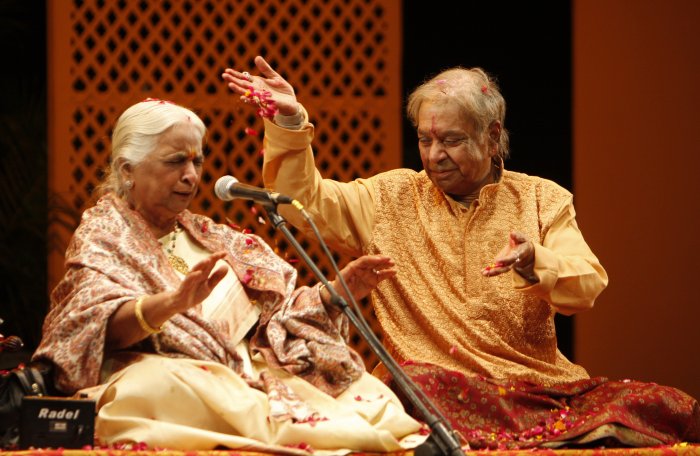 Girija Devi & Birju Maharaj Different moods and different emotions come alive like in the solo photograph of Balasaraswati standing in the half-light as a mother with a raised hand addressing little Krishna; or the subtle, gentle nayika enchanted by Krishna in the image of Kathak performer Nandini Singh Pasricha or the complex emotion of coquettish and submission by Bharatanatyam performer Chitra Visweswaran, or the sweat-filled face of the brilliant Kathak artiste Durga Lal. Some black and white photographs are iconic examples of Pasricha's art. Freezing the immersion of M.S. Subbulakshmi or the powerful half-lighted face of singer Kishori Amonkar reflecting the words of tabla maestro Zakir Hussain on the singing of Kishori tai, "Her music is like a painting that embodies every detail of someone's life. There is great happiness, great sadness, great anger, frustration, and desperation. It all comes concentrated in a little piece.' Pasricha's famous multiple-exposed images in a film camera caught the dynamics of a movement or changing mood in continuity, like the face of Kathak performer Gitanjali Lal. Says Pasricha, "Of course, the shift from the film to the digital camera is significant, and impacts the synergy between dance and photography. I put the shutter down for the multiple exposures and the film camera captured a series of meticulous, complex, continuous moments assimilating flow and completing a movement. The unlimited images in digital cameras contrast with the limited film camera where it was about luck and anticipation to capture the best in a limited space and final one." 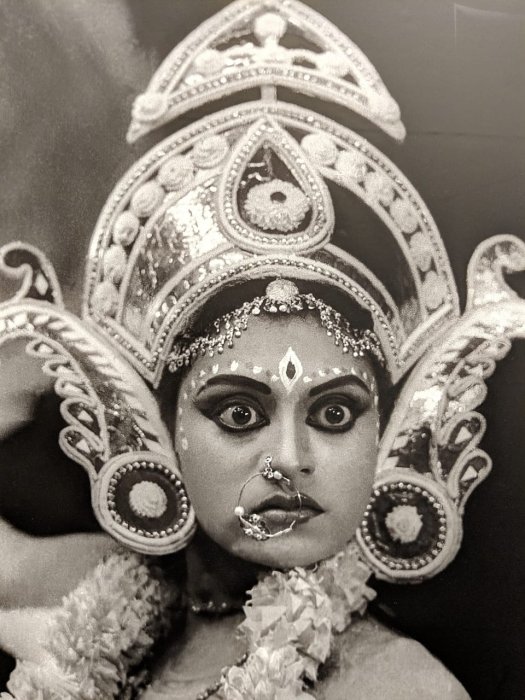 Swapnasundari In photographic art, the play of light and space dominates image creation. The retrospective records Pasricha's career as photo editor of SPAN magazine published by the USIS (United States Information Service) in New Delhi. The SPAN cover of October 1974 has a photograph of Louis Khan's forceful architecture, a vast circular opening from the library of IIM Ahmedabad. Just as Khan is known for his style incorporating light and its relationship to shadow and how shadow belonged to light, Pasricha, for instance, creates the image of the taut, sensual body of Bharatanatyam dancer Yamini Krishnamurti frozen as an apsara. Or the lighted dramatic face of Kuchipudi exponent Swapnasundari as the Devi. The photographer is like a goldsmith, taking a piece of gold, reducing it, uncovering truth, and making a more beautiful form in light and space.  Navina Jafa did her Phd on socio-economics, and aesthetics in the world of Kathak Dance in 6 urban towns of North India under Dr. Kapila Vatsyayan and urban historian Prof. Narayani Gupta. She learned Kathak from Gurus Pt. Birju Maharaj, Munna Shukla and Reba Vidyarthi. A Fulbright scholar at the Smithsonian Museum, she worked on cultural management and diplomacy. She runs a business on Academic Tourism and is vice president of Centre for New Perspectives presently working to create sustainable livelihoods for marginalized street-folk performers. |